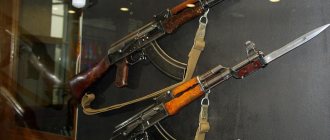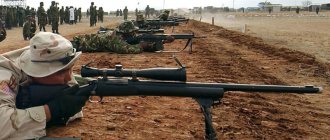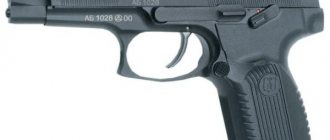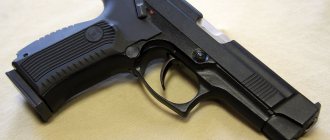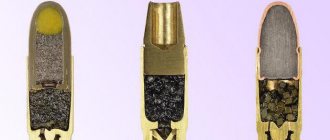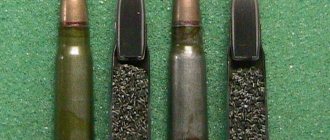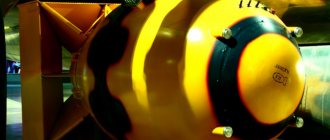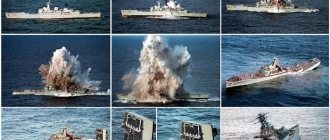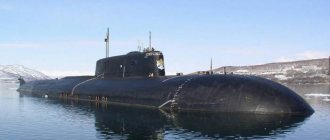History of the creation of the torpedo
In a general sense, by torpedo we mean a metal cigar-shaped or barrel-shaped military projectile that moves independently. The projectile received this name in honor of the electric stingray about two hundred years ago. The naval torpedo occupies a special place. It was the first to be invented and the first to be used in the military industry.
In a general sense, a torpedo is a streamlined barrel-shaped body, inside of which there is an engine, a nuclear or non-nuclear warhead and fuel. The tail and propellers are installed outside the hull. And the command to the torpedo is given through the control device.
The need for such weapons arose after the creation of submarines. At this time, towed or pole mines were used, which did not carry the required combat potential in a submarine. Therefore, the inventors were faced with the question of creating a combat projectile, smoothly flowing around water, capable of moving independently in the aquatic environment, and which would be able to sink enemy submarines and surface vessels.
Torpedo squall
First torpedo launchers
In 1866, while testing the first samples of his torpedoes, Robert Whitehead
) used the most simplified launcher, which was an inclined chute into which a torpedo was installed and, after starting the engine, it was released into the water.
This design could be used during tests and experiments, but was too unreliable for use in combat conditions. Therefore, Whitehead, in parallel with work on the torpedo itself, was forced to develop torpedo launchers. In 1870, during a demonstration of his torpedoes in Great Britain, Whitehead equipped the paddle steamer Oberon
with three types of launchers: one frame and two tube launchers, for underwater and surface launches.
The frame launcher was a spatial structure from which the torpedo was suspended. To launch, the fastening locks of the torpedo were released, which was immersed in the water and the engine was started using a halyard. Tube launchers were designed based on pneumatic release systems for sea mines. They were pipes equipped with front and rear covers and a trigger hook. Before launching, the torpedo was placed in a pipe; if an underwater launch device was used, the pipe was flooded with sea water. To launch, compressed air was supplied to the breech of the pipe, which pushed the torpedo out. Before launch, it was necessary to spin up the torpedo's gyroscope, which ensured directional stability during autonomous motion. In 1881, the American inventor John Ericsson ,
who had previously designed a throwing mine, developed a gunpowder starting device. Using Ericsson's device, a motorless mine could be thrown more than 250 meters on the surface and 40 meters underwater. In addition to gunpowder and air launchers, steam and mechanical tubular devices for launching torpedoes were developed. By the beginning of the twentieth century, installations for launching torpedoes acquired a modern look and their design features and principle of operation began to be determined by the parameters of the torpedoes themselves and the characteristics of the carrier ships.
History of creation
The idea of attacking enemy ships with self-propelled projectiles arose in the 15th century. The first documented fact was the ideas of the Italian engineer da Fontana. However, the technical level of that time did not allow the creation of working samples. In the 19th century, the idea was refined by Robert Fulton, who coined the term “torpedo.”
In 1865, a project for a weapon (or, as they called it then, a “self-propelled torpedo”) was proposed by the Russian inventor I.F. Alexandrovsky. The torpedo was equipped with an engine running on compressed air.
Horizontal rudders were used to control depth. A year later, a similar project was proposed by the Englishman Robert Whitehead, who turned out to be more agile than his Russian colleague and patented his development.
It was Whitehead who began to use the gyrostat and coaxial propulsion system.
The first state to adopt a torpedo was Austria-Hungary in 1871.
Over the next 3 years, torpedoes entered the arsenals of many naval powers, including Russia.
Origin of the term
In Russian, like other European languages, the word “torpedo” is borrowed from English (English torpedo) [].
There is no consensus regarding the first use of this term in English. Some authoritative sources claim that the first recording of this term dates back to 1776 and it was introduced into circulation by David Bushnell, inventor of one of the first prototype submarines, the Turtle. According to another, more widespread version, the primacy of the use of this word in English belongs to Robert Fulton and dates back to the beginning of the 19th century (no later than 1810)
In both cases, the term “torpedo” did not designate a self-propelled cigar-shaped projectile, but an egg- or barrel-shaped underwater contact mine, which had little in common with the Whitehead and Aleksandrovsky torpedoes.
Originally in English, the word “torpedo” refers to electric stingrays, and has existed since the 16th century and was borrowed from the Latin language (lat. torpedo), which in turn originally meant “numbness,” “rigidity,” “immobility.” The term is associated with the effect of the “strike” of an electric ramp.
Possible modifications
Modernization of the hydrojet torpedo is one of the most important tasks of weapons designers for the Russian naval forces. Therefore, work to improve Shkval was not completely curtailed even in the crisis of the nineties.
There are currently at least three modified "supersonic" torpedoes.
- First of all, this is the above-mentioned export variation of Shkval-E, designed specifically for production for sale abroad. Unlike a standard torpedo, the Eshka is not designed to be equipped with a nuclear warhead and destroy underwater military targets. In addition, this variation is characterized by a shorter range - 10 km versus 13 for the modernized Shkval, which is produced for the Russian Navy. Shkval-E is used only with launch systems unified with Russian ships. Work on the design of modified variations for the launch systems of individual customers is still “in progress”;
- Shkval-M is an improved variation of the hydrojet torpedo-missile, completed in 2010, with better range and warhead weight. The latter is increased to 350 kilograms, and the range is just over 13 km. Design work to improve weapons does not stop.
- In 2013, an even more advanced one was designed - Shkval-M2. Both variations with the letter “M” are strictly classified; there is almost no information about them.
Shkval-M modification at a weapons exhibition
Device
A torpedo is a self-propelled projectile that moves through the water under the influence of the energy of its own power plant. All components are located inside an elongated steel body of cylindrical cross-section.
In the head part of the body there is an explosive charge with devices that ensure detonation of the warhead.
The next compartment contains a fuel supply, the type of which depends on the type of engine installed closer to the stern. The tail section contains a propeller, depth and direction rudders, which can be controlled automatically or remotely.
The operating principle of the power plant of a steam-gas torpedo is based on the use of the energy of a steam-gas mixture in a piston multi-cylinder machine or turbine. It is possible to use liquid fuel (mainly kerosene, less often alcohol), as well as solid fuel (powder charge or any substance that releases a significant volume of gas upon contact with water).
When using liquid fuel, there is a supply of oxidizer and water on board.
The combustion of the working mixture occurs in a special generator.
Since during combustion of the mixture the temperature reaches 3.5-4.0 thousand degrees, there is a risk of destruction of the combustion chamber housing. Therefore, water is supplied to the chamber, reducing the combustion temperature to 800°C and below.
The main disadvantage of early torpedoes with a steam-gas power plant was the clearly visible trail of exhaust gases. This was the reason for the appearance of torpedoes with an electrical installation. Later, pure oxygen or concentrated hydrogen peroxide was used as an oxidizing agent. Thanks to this, the exhaust gases are completely dissolved in water and there is practically no trace of movement.
When using a solid fuel consisting of one or more components, the use of an oxidizer is not required. Thanks to this fact, the weight of the torpedo is reduced, and more intense gas formation of solid fuel ensures an increase in speed and range.
The engine used is steam turbine units equipped with planetary gearboxes to reduce the speed of the propeller shaft.
Countermeasures
Battleship Eustathius with anti-torpedo nets.
Designed ships began to be equipped with special passive protection systems. On the outer side of the sides, anti-torpedo boules were installed, which were narrowly directed sponsons partially filled with water. When a torpedo hit, the energy of the explosion was absorbed by the water and reflected from the side, reducing damage. After World War I, a torpedo belt was also used, which consisted of several lightly armored compartments located opposite the waterline. This belt absorbed the torpedo explosion and minimized internal damage to the ship. A type of anti-torpedo belt was the constructive underwater protection of the Pugliese system, used on the battleship Giulio Cesare.
Jet anti-torpedo protection system for ships "Udav-1" (RKPTZ-1)
To combat torpedoes that use various types of homing, ships and submarines are equipped with simulators and sources of interference that complicate the operation of various control systems. In addition, various measures are taken to reduce the physical fields of the ship. Modern ships are equipped with active anti-torpedo protection systems. Such systems include, for example, the Udav-1 (RKPTZ-1) anti-torpedo defense system for ships, which uses three types of ammunition (diverter projectile, minelayer projectile, depth projectile), a ten-barreled automated launcher with tracking tracking drives, fire control devices, loading and feeding devices.
History of the development of the Shkval jet torpedo
The world's first torpedo, relatively suitable for combat use against stationary ships, was designed and even homemade by the Russian inventor I.F. back in 1865. Alexandrovsky. His “self-propelled mine” was for the first time in history equipped with a pneumatic motor and a hydrostat (stroke depth regulator).
But at first, the head of the relevant department, Admiral N.K. Krabbe considered the development “premature”, and later mass production and adoption of the domestic “torpedo” was abandoned, giving preference to the Whitehead torpedo.
Since then, torpedoes and launchers have become increasingly widespread and modernized. Over time, special warships arose - destroyers, for which torpedo weapons were the main one.
The first torpedoes were equipped with pneumatic or steam-gas engines, developed a relatively low speed, and during the march they left a clear trail behind them, noticing which the sailors managed to make a maneuver - to dodge. Only German designers managed to create an underwater missile powered by an electric motor before World War II.
Advantages of torpedoes over anti-ship missiles:
- more massive / powerful warhead;
- explosion energy more destructive for a floating target;
- immunity to weather conditions - torpedoes are not hindered by any storms or waves;
- a torpedo is more difficult to destroy or knock off course by interference.
The need to improve submarines and torpedo weapons was dictated to the Soviet Union by the United States with its excellent air defense system, which made the American naval fleet almost invulnerable to bomber aircraft.
The design of a torpedo, surpassing existing domestic and foreign models in speed thanks to a unique operating principle, started in the 1960s. The design work was carried out by specialists from Moscow Research Institute No. 24, which was later (after the USSR) reorganized into the well-known State Research and Production Enterprise “Region”. The development was led by G.V., who was sent to Moscow from Ukraine for a long time and for a long time. Logvinovich - since 1967, academician of the Ukrainian Academy of Sciences. According to other sources, the design group was headed by I.L. Merkulov.
In 1965, the new weapon was first tested on Lake Issyk-Kul in Kyrgyzstan, after which the Shkval system was refined for more than ten years. The designers were tasked with making the torpedo missile universal, that is, designed to arm both submarines and surface ships. It was also necessary to maximize the speed of movement.
Initially, the underwater missile was devoid of a homing system and was equipped with a 150-kiloton nuclear warhead, capable of causing damage to the enemy up to and including the destruction of an aircraft carrier with all its weapons and escort ships. Variations with conventional warheads soon appeared.
Surviving copies
From top to bottom: British Mark IX, German G7e, American Mk 18
Thanks to mass production, many G7 torpedoes were preserved at submarine bases and were removed from surrendered submarines of all types at . Now G7 torpedoes of various modifications can be found in many military and specialized museums in all countries:
- Museum of the World Ocean, Kaliningrad, Russia ();
- Museum of Science and Industry, Chicago ();
- Museum of the Submarine Fleet in Balaklava ();
- Museum of the Red Banner Black Sea Fleet of the USSR, Sevastopol ();
- Wisconsin Maritime Museum ().
Other data
- The Neger man-controlled torpedo was built on the basis of the G7e torpedo.
- Based on the G7e torpedo captured by the Americans, it was constructed using reverse engineering.
- In allied documents, the Zaunkonig and Zaunkonig-II torpedoes appeared as GNAT - German Navy Acoustic Torpedo.
Principle of operation
On torpedoes of the 53-39 type, before use, you must manually set the parameters for the depth of movement, course and approximate distance to the target. After this, it is necessary to open the safety valve installed on the compressed air supply line to the combustion chamber.
When the torpedo passes the launch tube, the main valve automatically opens and air begins to flow directly into the chamber.
At the same time, kerosene begins to be sprayed through the nozzle and the resulting mixture is ignited using an electrical device. An additional nozzle installed in the chamber supplies fresh water from the on-board tank. The mixture is fed into a piston engine, which begins to spin the coaxial propellers.
For example, the German G7a steam-gas torpedoes use a 4-cylinder engine equipped with a gearbox to drive coaxial propellers rotating in the opposite direction. The shafts are hollow, installed one inside the other. The use of coaxial screws allows the deflecting moments to be balanced and the specified course of movement is maintained.
During startup, part of the air is supplied to the gyroscope spin-up mechanism.
After the head part begins to come into contact with the water flow, the rotation of the fighting compartment fuse impeller begins. The fuse is equipped with a delay device, which ensures that the striker is cocked into firing position after a few seconds, during which the torpedo will move 30-200 m from the launch site.
The deviation of the torpedo from the given course is corrected by the gyroscope rotor, which acts on the rod system connected to the rudders actuating machine. Electric drives can be used instead of rods. The error in stroke depth is determined by a mechanism that balances the spring force with the pressure of the liquid column (hydrostat). The mechanism is connected to the depth steering actuator.
When the warhead hits the ship's hull, the firing pins destroy the primers, which cause detonation of the warhead. German G7a torpedoes of later series were equipped with an additional magnetic detonator, which was triggered when a certain field strength was reached. A similar fuze has been used since 1942 on Soviet 53-38U torpedoes.
Comparative characteristics of some submarine torpedoes of the Second World War are given below.
| Parameter | G7a | 53-39 | Mk.15mod 0 | Type 93 |
| Manufacturer | Germany | USSR | USA | Japan |
| Case diameter, mm | 533 | 533 | 533 | 610 |
| Charge weight, kg | 280 | 317 | 224 | 610 |
| Explosive type | TNT | TGA | TNT | – |
| Maximum range, m | up to 12500 | up to 10000 | up to 13700 | up to 40000 |
| Working depth, m | up to 15 | up to 14 | – | – |
| Travel speed, knots | up to 44 | up to 51 | up to 45 | up to 50 |
Targeting
The simplest guidance technique is to program the course of movement. The course takes into account the theoretical linear displacement of the target during the time required to cover the distance between the attacking and attacked ship.
A noticeable change in the speed or course of the attacked ship leads to the torpedo passing by. The situation is partly saved by launching several torpedoes in a “fan” pattern, which makes it possible to cover a larger range. But such a technique does not guarantee hitting the target and leads to excessive consumption of ammunition.
Before the First World War, attempts were made to create torpedoes with course correction via a radio channel, wires or other methods, but it did not reach mass production. An example is John Hammond the Younger's torpedo, which used the light of an enemy ship's searchlight for homing.
To provide guidance, automatic systems began to be developed in the 1930s.
The first were guidance systems based on the acoustic noise emitted by the propellers of the attacked ship. The problem is low-noise targets, the acoustic background from which may be lower than the noise of the propellers of the torpedo itself.
To eliminate this problem, a guidance system was created based on reflected signals from the ship’s hull or the wake jet created by it. To adjust the movement of a torpedo, wire-based telecontrol techniques can be used.
Design and operating principle
Design of the G7a torpedo: 1 - fuse; 2 — training warhead; 3 - warhead; 4 - main body, fuel cell storage; 5 — torpedo type markers; 6 — tail section with motor; 7 — diving rudders; 8 — rudders; 9 — additional rotation regulator; 10 - counter-rotating screws.
For both types of torpedoes there is the same layout of modules. Sequentially from nose to tail: fuse, warhead, fuel tank, technical part with main mechanisms, propellers, tail section with rudders. However, while conducting both successful and not so successful military operations, the fleet needed to refine and improve its torpedoes, and this scheme also changed, although not radically.
Movement
G7a
— Compressed air, decathylene and sprayed chilled water are supplied to the combustion chamber of the torpedo engine, through a pressure valve and switch.
At the same time, on the way to the combustion chamber, compressed air passed through additional tubes and, under pressure, set other torpedo systems in motion (including the gyroscope rotor). The air mixture was ignited with a special impact igniter. When these three elements burn, they create a vapor-gas mixture, which puts pressure on the torpedo engine cylinders. The engine, in turn, through two axes inserted into each other, rotates two coaxial screws in different directions. At the same time, the same vapor-gas mixture, having passed through the engine, is vented out through a hole in the tail, leading to the appearance of a bubble trail. G7e
- This torpedo was driven by an electric motor through the same two axles and propellers.
The engine was powered by two batteries, each 110V. At the same time, the absence of training elements has a positive effect on camouflage.
Stabilization
Torpedo gyro TI (G7a)
G7 torpedoes have a classic stabilization system: Axial
— when rotating, the multidirectional propellers cancel out each other’s moment of impulse and the torpedo does not spin up when moving forward;
Course stabilization (guidance)
- using a gyroscope, which controlled the tail rudders using a mechanical system.
Any deviation from the course generated counteraction - a reverse deflection of the rudders until the torpedo was completely stabilized; Vertical stabilization (immersion depth)
- a depth sensor, a hydrostat, which in structure resembled a barometer. The control system is similar to the horizontal one used by the gyroscope.
Explosive part
All modifications of the torpedo used 280 kilograms of explosives coded SW. It is a solid mixture of hexanitrodiphenylamine (NHD), aluminum and trinitrotoluene. Every year the composition of the mixture and proportions were refined and improved - this is evidenced by the change in the serial number: SW-18, SW-36, SW-39. If structurally necessary, some torpedoes were equipped with a reduced amount of explosives of 274 kilograms (Falke, Zaunkonig, Zaunkonig-II).
Fuzes
Fuze Pi 3
Pi (G7a)
- a 1934 model fuse, used on both modifications of the torpedo at first.
Moreover, it essentially consisted of two fuses - contact AZ and non-contact MZ. Since 1939, the non-contact part has been switched off due to design imperfections. According to the tuning tables, according to the geographical position of the ship or submarine, the non-contact module was adjusted to 16 different magnetic zones of the planet using a special ring on the fuse. Outside the specified areas, this type of fuse was not used at all. Pi G7a (A+B)
- fuze model 1939.
It is an improved Pi fuze. The main reason for the modification is premature detonation of the torpedo in water during launch. Pi 1 (Pi G7H)
- fuze model 1940.
This fuze modification takes the first steps to correct fuze problems found during the “torpedo crisis.” The non-contact module is missing. As a result, it became the main fuze until 1942. Pi 2 (Pi 39H)
- fuze model 1942.
Again has two modules. The contact module is an analogue of Pi 1 (Pi G7H), the non-contact module is completely new, redesigned. TZ3
with
Pi 3
- 1943 model fuze.
As the name suggests, there is an improved version of the Pi fuse and a TZ3 proximity module - modified taking into account the Italian experience in using SIC fuses. It is possible to use either of them separately, or both at once. At the same time, the Pi 3 fuse was considered insufficiently reliable and was quickly replaced by the subsequent Pi 4. Pi 4
is a late 1943 model fuse that entered service with a modification of the TVI Falke torpedo.
Modified for acute angles of attack. TZ5
is a late 1943 type proximity fuse that was installed on TV Zaukonig torpedoes. Could be used in conjunction with the Pi 4 fuze.
Torpedo tube design
As the name suggests, a torpedo tube is a mechanism designed for firing torpedoes, as well as for transporting and storing them while traveling. This mechanism has the shape of a tube identical to the size and caliber of the torpedo itself. There are two shooting methods: pneumatic (using compressed air) and hydropneumatic (using water that is displaced by compressed air from a designated reservoir). Installed on a submarine, the torpedo tube is a fixed system, while on surface ships, the device can be rotated.
The operating principle of a pneumatic torpedo apparatus is as follows: when receiving the “start” command, the first drive opens the cover of the apparatus, and the second drive opens the valve of the compressed air tank. The compressed air pushes the torpedo forward, and at the same time a microswitch is activated, which turns on the motor of the torpedo itself.
For a pneumatic torpedo tube, scientists have created a mechanism that can disguise the location of a torpedo shot under water - a bubble-free mechanism. The principle of its operation was as follows: during the shot, when the torpedo had passed two-thirds of its path through the torpedo tube and acquired the required speed, a valve opened through which compressed air went into the strong hull of the submarine, and instead of air, due to the difference between the internal and external pressure, the apparatus was filled with water until the pressure balanced. Thus, there was practically no air left in the chamber, and the shot went unnoticed.
The need for a hydropneumatic torpedo tube arose when submarines began to dive to depths of more than 60 meters. The shot required a large amount of compressed air, and it was too heavy at such a depth. In a hydropneumatic apparatus, the shot is fired by a water pump, the impulse from which pushes the torpedo.
Carriers of torpedo weapons
As mentioned above, the first carrier of torpedo weapons is a submarine, but besides it, of course, torpedo tubes are also installed on other equipment, such as airplanes, helicopters and boats.
Torpedo boats are light, lightweight boats equipped with torpedo launchers. They were first used in military affairs in 1878-1905. They had a displacement of about 50 tons, and were armed with 1-2 torpedoes of 180 mm caliber. After this, development went in two directions - increasing displacement and the ability to carry more installations on board, and increasing the maneuverability and speed of a small vessel with additional ammunition in the form of automatic weapons up to 40 mm caliber.
Light torpedo boats from World War II had almost identical characteristics. Let's take the Soviet G-5 project boat as an example. This is a small fast boat weighing no more than 17 tons, had on board two 533 mm caliber torpedoes and two 7.62 and 12.7 mm caliber machine guns. Its length was 20 meters, and its speed reached 50 knots.
In 1940, the first prototype of a torpedo missile was presented. The homing missile launcher had a 21 mm caliber and was dropped from anti-submarine aircraft by parachute. This missile hit only surface targets and therefore remained in service only until 1956.
In 1953, the Russian fleet adopted the RAT-52 torpedo missile. Its creator and designer is considered to be G.Ya. Dilon. This missile was carried on board aircraft such as Il-28T and Tu-14T.
The missile did not have a homing mechanism, but the speed of hitting the target was quite high - 160-180 m/s. Its speed reached 65 knots, with a range of 520 meters. The Russian Navy used this installation for 30 years.
Soon after the creation of the first aircraft carrier, scientists began to develop a model of a helicopter capable of arming itself and attacking with torpedoes. And in 1970, the Ka-25PLS helicopter was adopted by the USSR. This helicopter was equipped with a device capable of releasing a torpedo without a parachute at an angle of 55-65 degrees. The helicopter was armed with an AT-1 aircraft torpedo. The torpedo was 450 mm caliber, with a control range of up to 5 km and a depth of entry into the water of up to 200 meters. The motor type was an electric disposable mechanism. During the shot, electrolyte was poured into all batteries from one container at once. The shelf life of such a torpedo was no more than 8 years.
Torpedoes of the Russian fleet of the early twentieth century and the First World War
In 1871, Russia achieved the lifting of the ban on keeping the navy in the Black Sea. The inevitability of war with Turkey forced the Naval Ministry to speed up the rearmament of the Russian fleet, so Robert Whitehead’s offer to purchase a license for the production of torpedoes of his design came in handy. In November 1875, a contract was prepared for the purchase of 100 Whitehead torpedoes designed specifically for the Russian Navy, as well as the exclusive right to use their designs. Special workshops for the production of torpedoes were created in Nikolaev and Kronstadt under Whitehead’s license. The first domestic torpedoes began to be produced in the fall of 1878, after the start of the Russian-Turkish War.
Mine boat Chesma
Despite the repeated order of torpedoes in Fiume, the Naval Ministry organized the production of torpedoes at the Lessner boiler plant, the Obukhov plant and in already existing workshops in Nikolaev and Kronstadt. By the end of the 19th century, up to 200 torpedoes were produced in Russia per year. Moreover, each batch of manufactured torpedoes underwent sighting tests without fail, and only then entered service. In total, until 1917, the Russian fleet had 31 modifications of torpedoes. Most of the torpedo models were modifications of Whitehead torpedoes, a small part of the torpedoes were supplied by the Schwarzkopf factories, and in Russia the torpedo designs were further developed. Inventor A.I. Shpakovsky, who collaborated with Aleksandrovsky, in 1878 proposed using a gyroscope to stabilize the course of a torpedo, not yet knowing that Whitehead torpedoes were equipped with a similar “secret” device. In 1899, Lieutenant of the Russian Navy I. I. Nazarov proposed his own design of an alcohol heater. Lieutenant Danilchenko developed a project for a powder turbine for installation on torpedoes, and mechanics Khudzynsky and Orlovsky subsequently improved its design, but the turbine was not accepted for mass production due to the low technological level of production.
Whitehead torpedo
DestroyersBaltic FleetFirst World War
In 1912, a unified designation began to be used to designate torpedoes, consisting of two groups of numbers: the first group is the rounded caliber of the torpedo in centimeters, the second group is the last two digits of the year of development. For example, type 45-12 stood for a 450 mm torpedo developed in 1912. The first completely Russian torpedo of the 1917 model, type 53-17, did not have time to go into mass production and served as the basis for the development of the Soviet torpedo 53-27.
Main technical characteristics of torpedoes of the Russian fleet before 1917
| Comparative table of torpedoes of the Russian fleet until 1917 | |||||||||
| Type | Year of development | Caliber, mm | Length, m | Total weight, kg | Explosive mass, kg | Travel range, m | Travel speed, knots | engine's type | Applicability |
| Alexandrovsky24-inch | 1868 | 610 | 5,82 | 1000 | 762 | 6-8 | 1-cylinderair | did not enter service | |
| Alexandrovsky22-inch | 1868 | 560 | 7,34 | 1000 | 10-12 | 1-cylinderair | did not enter service | ||
| Alexandrovsky24-inch mod. | 1875 | 610 | 6,1 | 18 | 2-cylinder air | did not enter service | |||
| Whitehead arr. 1876 | 1876 | 381 | 5,73 | 350 | 26 | 400 | 20 | 2-cylinder air | |
| Whitehead arr. 1880 | 1880 | 381 | 4,56 | 324 | 33 | 400 | 20 | 2-cylinder air | mine boats |
| Whitehead arr. 1882 | 1882 | 355 | 3,35 | 197 | 40 | 550 | 21 | 2-cylinder air | |
| Whitehead arr. 1886 | 1886 | 381 | 5,52 | 391 | 40 | 600 | 24 | 2-cylinder air | armadillos |
| Whitehead arr. 1889 type "B" | 1889 | 381 | 5,52 | 395 | 80 | 600 | 22 | 2-cylinder air | |
| Whitehead arr. 1889 type "O" | 1889 | 381 | 5,52 | 420 | 80 | 600 | 25 | 2-cylinder air | |
| Whitehead arr. 1894 type "C" | 1894 | 381 | 5,52 | 455 | 80 | 600 | 27 | 3-cylinder air | |
| Whitehead arr. 1897 type "C" | 1894 | 381 | 5,2 | 426 | 64 | 400900 | 3025 | 3-cylinder air | |
| Whitehead arr. 1898 type "L" | 1894 | 381 | 5,18 | 430 | 64 | 400900 | 3025 | 3-cylinder air | cruisers, destroyers |
| Whitehead arr. 1904 | 1904 | 450 | 5,13 | 648 | 70 | 8002000 | 3325 | 3-cylinder air | cruisers, destroyers |
| Schwartzkopff B/50 | 1904 | 450 | 3,55 | 390 | 50 | 800 | 24 | 3-cylinder air | submarines, cruisers, destroyers |
| Whitehead arr. 1907 | 1907 | 450 | 5,2 | 641 | 90 | 60010002000 | 403427 | 3-cylinder air | submarines |
| Whitehead arr. 1908 | 1908 | 450 | 5,2 | 650 | 95 | 100020003000 | 383428 | 4-cylinderair | |
| Whitehead arr. 1910 type "L" | 1910 | 450 | 5,2 | 665 | 100 | 1000200030004000 | 38342925 | 4-cylinderair | |
| 45-12 | 1912 | 450 | 5,58 | 810 | 100 | 200050006000 | 433028 | 2-cylinder air | surface ships |
| 45-15 | 1915 | 450 | 5,2 | 665 | 100 | 200050006000 | 433028 | 4-cylinderair | submarines |
| 53-17 | 1917 | 533 | 7,0 | 1700 | 265 | 3000 | 32 | 3-cylinder air | did not enter service |
Torpedo 53-56 and its modifications
New technologies and technical solutions can significantly improve the performance of weapons or military equipment. However, their development is always associated with many difficulties, which often prevents the full implementation of all plans. In addition, when mastering new technologies, secrecy should be maintained. In some cases, this leads to interesting consequences, as was the case with the Soviet torpedo 53-56. The basic modification of this product became the first domestic torpedo with an oxygen engine, and later versions remained in history as the last steam-gas torpedoes. The reason for this was precisely the secrecy and problems with the new units. In the late forties and early fifties, Soviet specialists analyzed captured German documentation and also conducted their own research. Based on our own and borrowed experience, as well as using ready-made units, new models of torpedo weapons were created. It was this approach, in particular, that made it possible to improve existing electric torpedoes, as well as to create the first domestic torpedo with a homing system. One of the main areas of work was the creation of new power plants with improved performance.
Back in the mid-forties, shortly after the end of the Great Patriotic War, specialists from the Research Mine and Torpedo Institute (NIMTI) began working on the topic of oxygen thermal engines. Such power plants were a further development of existing combined-cycle engines and had to differ from them in some features. In particular, the use of pure oxygen instead of compressed air made it possible to eliminate the release of a vapor-gas mixture, which forms a trail of bubbles on the surface of the water. Thus, the oxygen engine, like the electric one, made it possible to create a new traceless torpedo that did not reveal its location and did not unmask the carrier submarine.
Torpedo 53-56V - outwardly no different from 53-56 KITI. Photo Militaryarms.ru
Around the late forties or early fifties, NIMTI developed a preliminary design for a promising torpedo with a new power plant. This project passed a number of necessary checks, after which an experimental 533 mm torpedo was manufactured. The prototype was tested, based on the results of which further development paths for the existing project were determined. Soon after the completion of this stage of work, the project was transferred to the design bureau, Tokmak). Further development of the new project was carried out by this organization with some assistance from specialized institutes. The project of a promising oxygen torpedo received the code designation “Product 227”. A.B. was appointed chief designer. Topolyansky.
Work on the new project took several years and continued until the mid-fifties. During this time, the main issues related to the design of the power plant were resolved, and the proposed technical solutions were tested. By the middle of the decade, the project was ready for the assembly and testing of experimental torpedoes. According to available data, the development of new weapons was hampered by difficulties in testing a new type of engine. At the same time, an existing product was taken as the basis for the new torpedo machine. The oxygen heat engine was created on the basis of the steam-gas engine of the torpedo 53-51. Despite the use of ready-made units, converting the engine to a new oxidizer was associated with certain problems.
The first version of Product 227 was supposed to be a “traditional” straight-line torpedo without homing systems. In this case, it was assumed that an oxygen heat engine would be used to ensure movement without forming a wake on the water. Thus, from a design point of view, the new torpedo could be considered a redesigned version of the existing weapon of previous models.
The new type of torpedo received a standard cylindrical body with a hemispherical head and a conical tail fairing. The latter had an X-shaped structure with rudders, inside of which two coaxial propellers were located. The layout of the internal volumes was also traditional. At the head of the hull there was a fighting compartment with an explosive charge and a fuse, behind them there was a large tank for compressed oxygen. The aft compartment contained tanks for kerosene, fresh water and oil, as well as a steam and gas generator, engine and control equipment. The torpedo had a caliber of 53 cm and a total length of 7.45 m. The weight of the assembled product reached 1900 kg.
“Product 227” received a fighting compartment with a 400-kg charge. To detonate the charge, it was proposed to use a new optical proximity fuse of the NV-57 type. This product was supposed to initiate detonation of the warhead when a torpedo passed at a short distance from the target. Reacting to changes in the light falling on the sensor, the fuse was supposed to detect the target and give the command to detonate. This was used to compensate for minor errors.
Torpedo layout 53-56. Drawing by Shirokorad A.B. Weapons of the domestic fleet. 1945-2000.
An oxygen heat engine, created on the basis of the torpedo machine 53-51, was placed in the aft compartment of the torpedo. This device included a steam and gas generator and a piston engine with two horizontal cylinders connected to a crank mechanism and two coaxial propellers. During operation, the engine's steam and gas generator had to burn kerosene (oxygen was used as an oxidizer) and then mix the resulting gas with fresh water. The resulting steam-gas mixture was supplied to the cylinders and interacted with the pistons, rotating the propeller shafts.
The applied power plant allowed the Product 277 to reach speeds of up to 50 knots. If necessary, it was possible to set a different mode of operation of the machine, in which the speed reached only 40 knots. In the first mode, the range was 8 km, in the second – up to 13 km.
For the Product 227 torpedo, new equipment was developed that was responsible for keeping it on a given course and at the required depth. The principles of its operation, according to available data, remain the same. A hydrostat was responsible for controlling the depth, and a gyroscopic device was used to monitor changes in course. When determining deviations from the desired course, these devices issued commands to the steering engines, which returned the torpedo to the correct position.
In 1955-56, Plant No. 175 completed design work, after which it produced experimental torpedoes of a new type. The tests were completed successfully, after which the torpedo was put into service. In accordance with the nomenclature accepted at that time, the product received a new designation 53-56 - a torpedo of 53 cm caliber, mod. 1956. In addition, the name 53-56 KIT (“Oxygen Torpedo”) is found, which refers to the first modification of the product. Serial production of such weapons was entrusted to the plant named after. CM. Kirov (Almaty).
According to some reports, full-fledged serial production of new torpedoes did not begin immediately. By the time the assembly of serial torpedoes began, Project 53-56 retained some shortcomings that had to be eliminated after the official adoption. All these problems affected the basic characteristics of the weapon, as well as its reliability. It took some time to correct the shortcomings and master the production of combat-ready weapons, after which deliveries of torpedoes to the fleet began. The carriers of the new torpedoes were surface ships and submarines of various types, equipped with 53-cm torpedo tubes.
The 53-56 torpedo differed from previous domestic weapons of its class in its higher characteristics, provided by a new power plant. For this reason, it was decided to leave the basic version of the 53-56 KIT only for arming the Soviet fleet. In turn, it was proposed to supply products of a new modification for export. According to other sources, it was proposed to develop a new project due to technical problems with existing weapons. The development of a new version of the weapon started in the early sixties at the design bureau of plant No. 175. This project was designated 53-56B or “Product 275.”
Piston engine used on torpedoes 53-51 and 53-56 of various modifications. Photo Militaryrussia.ru
The basic project 53-56, as well as the existing steam-gas torpedoes 53-39PM and 53-51, were taken as the basis for the 53-56V product. Almost the entire design was borrowed from the oxygen torpedo, with the exception of some elements of the power plant, which were taken from 53-39PM and 53-51. So, instead of an oxygen tank, a 647-liter tank for compressed air was installed. Other containers remained in place. As a result of this, a new torpedo appeared with a steam-gas thermal engine, which, unlike the oxygen engine, was no longer a secret, and was also tested in practice. The consequence of this approach to design was a slight reduction in characteristics.
The 53-56V torpedo differed from the oxygen prototype in its total length, which increased to 7.74 m. The caliber and weight, including the weight of the fighting compartment, remained the same. The torpedo speed was 40 or 50 knots. Due to the lower efficiency of the combined-cycle engine compared to the oxygen engine, the maximum range of the new torpedo was only 8 km. At maximum speed, the range was halved.
After passing all the necessary tests, the 53-56B torpedo was accepted for service and put into mass production. In addition, it was offered to foreign customers. There is no exact information on supplies of 53-56B to foreign countries. According to some reports, India ordered such weapons, but other sources mention that torpedoes of other modifications were supplied to the Indian Navy.
There is information about the use of 53-56B torpedoes by the Navy of the Soviet Union. In our country, this weapon was used for training purposes and was considered as a cheap analogue of the oxygen 53-56 KIT. Thus, the fleet received the opportunity to train personnel and conduct combat training activities without consuming the service life of relatively expensive torpedoes. In addition, some sources mention that the new steam-gas torpedo differed from the oxygen prototype in greater reliability, which could also affect approaches to the operation of weapons.
In the mid-sixties, the Yugoslav Navy ordered the Soviet Union to develop a modification of the 53-56B torpedo with a homing system. The development of such weapons was entrusted to NII-400 (now Central Research Institute Gidropribor). This project was designated “Product 274” or 53-56VA.
Torpedo 53-56VA. The fastenings of the circuit cover of the hydroacoustic antenna are clearly visible. Photo Militaryrussia.ru
To fulfill an order from a friendly state, the design of the base product had to be significantly redesigned. Thus, the fighting compartment was reduced, and a homing system similar to those used on other torpedoes of that time was installed in the freed volume. The head fairing of the body received a straightened front part, on which a hydroacoustic antenna with several receivers was mounted. To reduce the level of interference, the antenna was covered with an additional lightweight radome. According to available data, the homing system provided target search in only one plane and responded to a target at a distance of up to 600 m. Thus, the torpedo could only be used against surface ships.
The 53-56VA homing torpedo was equipped with a reduced fighting compartment weighing 260 kg. Due to this and some other modifications, the total weight of the weapon was reduced to 1875 kg. To ensure homing operation and reduce the noise of its own units, the power of the main machine was reduced, which led to a reduction in speed. “Product 274” could reach the target at a speed of 29 or 32 knots. In this case, the range was 11 or 10 km, respectively.
Adaptation of existing homing systems for installation on a steam-gas torpedo was associated with a number of noticeable problems. Because of this, in particular, the delivery date of the finished product to the customer, represented by the Yugoslav Navy, was delayed several times. After a number of difficulties, the work was completed only in 1966. At the same time, the first batch of serial torpedoes was sent to the customer. Subsequently, 53-56VA products were ordered from India. There is also information about the supply of similar torpedoes to the USSR Navy.
The first torpedo of the 53-56 family was put into service in the mid-fifties. Subsequently, new modifications of these weapons appeared, differing in the type of power plant and the use of a homing system. Weapons of all three modifications were supplied to the domestic fleet, and products with the letters “B” and “VA” were also exported. It is known that the production of such torpedoes continued at least until the mid-seventies. They remained in service with the Soviet Navy until the early or mid-eighties.
During the development of torpedoes of the 53-56 family, a number of important design problems were solved, which led to the development of new technologies and the emergence of weapons with high performance. Thus, the basic product of the 53-56 KIT line remained in the history of domestic mine and torpedo weapons as the first production torpedo with an oxygen thermal engine. Subsequently, similar power plants were used on a number of other torpedoes, some of which are still in use today. The last torpedo of the family, 53-56VA, also took an interesting place in history. This was the last domestic torpedo equipped with a steam-gas engine. By the mid-sixties, when it was developed, such power plants were already considered obsolete. Subsequently, designers of torpedo weapons switched to newer and more advanced systems, the creation of which actively used developments from the 53-36 KIT project.
Based on materials from: https://wunderwafe.ru/ https://submarine-at-war.ru/ https://militaryarms.ru/ https://militaryrussia.ru/blog/topic-475.html Shirokorad A.B . Weapons of the domestic fleet. 1945-2000. – Mn.: “Harvest”, 2001 Gusev R.A. Such is the life of a torpedo. – St. Petersburg: Iva, 2003
See also[edit | edit code]
- Torpedo attack
- Rocket torpedo
- A sea mine (the original definition of a torpedo was a “self-propelled mine”) a towed mine - the first weapon of the first mine boats (a sea mine towed into an attack using a cable)
- pole mine - a mine attached to a pole in front of a mine boat and exploding when it hits an obstacle
- throwing mine
aircraft:
- Torpedo bomber
- Kettering aerial torpedo
ships:
- Submarine
- torpedo boat
- Destroyer
- Destroyer
other:
- Torpedo Data Computer is one of the earliest analog computers, used on American submarines of World War II to calculate the course of a torpedo.
- Bangalore torpedo
Combat use
The first state to use the new weapon in action was Russia. Torpedoes were used during the Russo-Turkish War of 1877-78 and were launched from boats. The second major war using torpedoes was the Russo-Japanese War of 1905.
During the First World War, weapons were used by all belligerents not only in the seas and oceans, but also on river communications. Germany's extensive use of submarines led to heavy losses in the Entente and Allied merchant fleets. During the Second World War, improved versions of weapons began to be used, equipped with electric motors and improved guidance and maneuvering systems.
From prosperity to survival
At first, Dagdizel produced steam-gas torpedoes, and since the 60s of the 20th century, the production of electric torpedoes became the main direction of the plant’s work. Subsequently, broadband mine systems and thermal torpedoes using unitary fuel were manufactured here, and Dagdizel was the only USSR enterprise that carried out their large-scale production.
In the post-war period, the main manufacturers of torpedoes for the USSR Navy were the plant named after. Kirov (Almaty, Kazakhstan), (Leningrad), plant named after. 50th anniversary of the Kyrgyz SSR (now Dastan Corporation, Kyrgyzstan).
The development of torpedoes was carried out by NII-400 (the future Central Research Institute Gidropribor), the design bureau of the plant named after. Kirov (torpedo 53-65K of 1970 and works of the 80s on the “Magot” theme), branch of NII-400 in Lomonosov (future Morteplotekhnika OJSC).
Collage by Andrey Sedykh
In 1973, torpedo developers and manufacturers were united into the specialized NPO Uran. From the standpoint of today, this was a very controversial decision. If in the 50-60s our torpedoes looked very decent in comparison with foreign analogues (a number of models developed at that time are still in service and in demand for export), then the results of the work of NPO Uran are 70-80- x are depressing. At the time of the collapse of the USSR, in no other types and types of weapons and military equipment did the Soviet Union lag behind its potential enemy as significantly as in the field of naval underwater weapons.
After December 1991, NPO Uran ceased to exist. “Dagdizel”, “Dvigatel”, “Gidropribor” and “Morteplotekhnika” remained on the territory of the Russian Federation. During that difficult period, each enterprise “floated” independently.
The 90s were extremely difficult for Dagdizel. The issue of deploying its own R&D became acute for the plant - as a condition for the survival and development of the enterprise.
Modern types of torpedoes
Torpedoes in the modern world are a serious weapon for submarines, surface vessels and naval aviation. This is a powerful and controlled projectile that contains a nuclear warhead and about half a ton of explosives.
If we consider the Soviet naval weapons industry, then at the moment, in terms of torpedo launchers, we are about 20-30 years behind world standards. Since Shkval, created in the 1970s, Russia has made no major advances.
One of Russia's most modern torpedoes is a warhead equipped with an electric motor - TE-2. Its mass is about 2500 kg, caliber - 533 mm, warhead weight - 250 kg, length - 8.3 meters, and speed reaches 45 knots with a range of about 25 km. In addition, TE-2 is equipped with a self-guidance system, and its shelf life is 10 years.
In 2015, the Russian fleet received a torpedo called “Physicist”. This warhead is equipped with a heat engine running on a single-component fuel. One of its varieties is a torpedo called “Whale”. The Russian fleet adopted this installation for service in the 90s. The torpedo was nicknamed the “aircraft carrier killer” because its warhead was simply astonishingly powerful. With a caliber of 650 mm, the mass of the combat charge was about 765 kg of TNT. And the range reached 50-70 km at 35 knots of speed. “Physicist” itself has slightly lower combat characteristics and will be discontinued when its modified version, “Case,” is shown to the world.
According to some reports, the “Case” torpedo should enter service as early as 2022. All its combat characteristics are not disclosed, but it is known that its range will be approximately 60 km at a speed of 65 knots. The warhead will be equipped with a thermal propulsion engine – the TPS-53 system.
At the same time, the most modern American torpedo, the Mark-48, reaches a speed of up to 54 knots with a range of 50 km. This torpedo is equipped with a multiple attack system if it loses its target. The Mark-48 has been modified seven times since 1972, and today it is superior to the Physicist torpedo, but inferior to the Futlyar torpedo.
The torpedoes of Germany - DM2A4ER, and Italy - Black Shark are slightly inferior in their characteristics. With a length of about 6 meters, they reach speeds of up to 55 knots with a range of up to 65 km. Their mass is 1363 kg, and the mass of the combat charge is 250-300 kg.
Everything for a torpedo
“My attitude towards life has changed a lot. It's hard to be optimistic when all you see every day is a sofa and a wooden fence from the window. When your legs and back constantly hurt, everything hurts. When you have attacks, and you fall and break. I am a burden for my wife, who with sore legs is forced to go to work every day so that we don’t starve to death on our pensions. The machine that I had been saving up for for a long time was of no use to me—I’m unlikely to ever be able to work while standing. There’s a boat rusting in my yard that I’ll never be able to put on the water again... Sometimes I deliberately sit on the couch until I’m blue in the face so that my legs fucking fall off! And I wanted to die more than once.”
***
Despite the fact that Leonid still finds it difficult to live, for some time now thoughts of death have faded into the background. Because, firstly, he learned about the existence of a tabletop lathe, at which you can work while sitting. And secondly, a new obsession appeared - to equip a wheelchair with a mini-model of a steam-gas torpedo engine.
“Russia has adopted the program “Accessible Environment for Disabled People.” This slogan sounds from every iron. What's the reality? Here is my accessible environment: four walls, beyond which you cannot go! In the summer it’s still all right, and in the winter the snow gets a little heavier - I won’t be able to leave the house. One day, leaning on the stroller while going to the bathhouse, I thought how cool it would be to attach a steam-gas torpedo engine to the stroller. The result is a kind of all-terrain stroller, a torpedo on wheels, powered by wood. It will act as a workhorse; you can easily navigate it on bad roads, go to the forest, perform field and other work. Yes, there are electric wheelchairs. But they are unlikely to travel on our roads, and the charge for this one has run out - and that’s it, there’s no escape. And then I refueled with diesel fuel - and off I went. The fuel ran out, I added some firewood and was back in action.”
According to Leonid, the converted wheelchair will look like a mini-torpedo: a one and a half meter long pipe, four wheels and a pneumatic motor.
“If I had one like this, I would go to the Volga, fishing, into the forest, anywhere! I would travel around the regions!” — Leonid dreams out loud, with difficulty getting out of the house into the yard. There are potholes in the yard covered with snow. A barn without a door, inside of which one can see a lathe covered with frost. A boat with peeling paint, boards and various rubbish. The small vegetable garden where Leonid works in the summer, sitting on a low stool he put together with his own hands, cuts off weeds with a flat cutter, which he also assembled himself.
Behind the gate there is a long country road - one step left and right, and it is no longer possible to pass in a stroller. Leonid could go to the club for concerts, he could lead a technical club (the director of the local school gives the go-ahead), he could even start a business (he has ideas), if he had a stroller with a motor. The difficulty is that he is not able to buy a tabletop lathe today (the cost varies from 60 to 150 thousand rubles): a lot of money is spent on medicines and trips to the hospital. He and his wife have a more than modest pension, and they can’t save up.
Along the way, stopping every now and then, Leonid talks about another of his ideas - to make a garden on the water for the disabled.
– You can grow a vegetable garden on a raft made of plastic bottles. A man is sitting on the bank - he pulled a garden bed towards him, planted it, weeded it, pulled another one... And there is no need to walk around the garden. This would make life much easier for village people with disabilities! I saw on the Internet that there is something like this abroad, but nothing here - it’s a shame...
- Dad, pull up your pants, your butt is half naked! - the wife laughs in the corridor when Leonid, exhausted from his walk, crawls into the house. “He has no sensitivity in his legs, so he may not even notice that there are no pants,” she explains. And puts her husband to rest.
While the tea is heating, Svetlana tells how she went to the hospital with a blue leg and an ulcer. And now it’s better, but my leg is swollen and still hurts. More than anything, she wants her husband to finally realize himself. Maybe then she will be healthier and she can rest.
Prerequisites for creation
rus. Giovanni Biagio Luppis
English
coastsaver
to Robert Whiteheadangle.
Robert Whitehead
Whitehead managed to solve two problems that stood in the way of his predecessors. The first problem was a simple and reliable engine that would make the torpedo autonomous. Whitehead decided to install a pneumatic engine on his invention, running on compressed air and driving a propeller installed in the stern. The second problem was the visibility of a torpedo moving through the water. Whitehead decided to make the torpedo in such a way that it would move at a shallow depth, but for a long time he was unable to achieve a stable diving depth. The torpedoes either floated up, went to great depths, or generally moved in waves. Whitehead managed to solve this problem with the help of a simple and effective mechanism - a hydrostatic pendulum, which controlled the depth rudders. reacting to the trim of the torpedo, the mechanism deflected the depth rudders in the desired direction, but at the same time did not allow the torpedo to make wave-like movements. The accuracy of maintaining the depth was quite sufficient and amounted to ±0.6 m.
